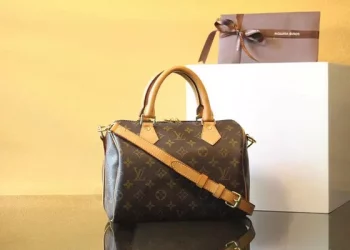Unveiling the Secrets of Louis Vuitton Leather
Louis Vuitton, a renowned luxury brand synonymous with sophistication and craftsmanship, is celebrated for its impeccable leather goods. From iconic handbags to stylish accessories, the quality of Louis Vuitton’s leather plays a crucial role in creating their signature products. In this comprehensive guide, we delve into the world of Louis Vuitton leather, exploring the materials used and shedding light on the meticulous process that goes into creating these luxurious goods.
The Artistry of Louis Vuitton Leather
When it comes to leather, Louis Vuitton employs a combination of traditional techniques and modern innovation to create products that are not only beautiful but also durable and long-lasting. Each step of the leather production process is meticulously executed to ensure the highest standards of quality and craftsmanship.
Materials Used in Louis Vuitton Leather Goods
Louis Vuitton primarily uses three types of leather in their creations: cowhide leather, calf leather, and exotic leathers such as crocodile and python. Let’s take a closer look at each of these materials:
Cowhide Leather:
Cowhide leather is one of the most commonly used leathers in Louis Vuitton’s collections. It is known for its durability, strength, and natural grain patterns. The brand carefully selects the finest cowhide hides, which are then treated and processed to enhance their texture and appearance. This type of leather develops a rich patina over time, adding character and charm to the product.
Calf Leather:
Calf leather is another popular choice for Louis Vuitton’s leather goods. It is sourced from young cattle and is prized for its soft, supple feel and fine grain. Calf leather is often used for more delicate and refined designs, providing a luxurious touch to the products.
Exotic Leathers:
Louis Vuitton also offers a range of exotic leathers for those seeking a unique and luxurious option. These include leathers sourced from crocodiles, alligators, pythons, and more. Exotic leathers are highly prized for their rarity and distinctive patterns, making them coveted choices for high-end leather goods.
Leather Treatments and Finishes
In addition to carefully selecting the right type of leather, Louis Vuitton employs various treatments and finishes to enhance the appearance, durability, and longevity of their leather goods. Some of these treatments include:
Tanning:
Tanning is a process that converts raw hides into durable leather. Louis Vuitton utilizes both vegetable tanning and chrome tanning methods to create different effects and desired characteristics in their leather.
Dyeing:
Dyeing is a crucial step in the leather production process. Louis Vuitton artisans expertly dye the leathers using a range of high-quality dyes to achieve the desired color and depth. This step requires precision and skill to ensure uniformity and consistency.
Surface Treatments:
Louis Vuitton employs various surface treatments to protect and enhance the leather’s appearance. These can include embossing, glazing, and waxing techniques, which add texture, shine, and water resistance to the leather.
Edge Painting:
Edge painting is a meticulous process where the edges of the leather are carefully painted to give a finished look. This technique adds a polished and refined touch to Louis Vuitton’s leather goods.
Patina Development:
One of the unique features of Louis Vuitton leather is its ability to develop a beautiful patina over time. This natural aging process is influenced by factors such as exposure to sunlight, oils from the skin, and regular use. The patina adds depth, character, and a sense of personalization to the leather goods.
Caring for Louis Vuitton Leather Goods
Proper care and maintenance are essential to preserve the beauty and longevity of Louis Vuitton leather goods. Here are some tips to keep in mind:
Avoid direct sunlight:
Prolonged exposure to direct sunlight can cause the leather to fade or discolor. Store your Louis Vuitton items in a cool, dry place away from direct sunlight when not in use.
Keep away from moisture:
Protect your leather goods from excessive moisture and water. If they come into contact with water, gently blot the area with a soft cloth and allow it to air dry naturally, away from direct heat sources.
Use a leather conditioner:
Regularly applying a high-quality leather conditioner can help keep the leather supple and prevent it from drying out and cracking. Follow the manufacturer’s instructions for best results.
Handle with clean hands:
When handling your Louis Vuitton leather items, ensure that your hands are clean and free from oils or lotions that may transfer onto the leather.
Store properly: Proper storage is essential to maintain the shape and condition of your Louis Vuitton leather goods. Here are some tips for storing them:
Conclusion
Louis Vuitton leather goods are crafted with utmost precision and attention to detail, using high-quality materials and employing traditional techniques. The brand’s commitment to excellence ensures that each piece is not only aesthetically pleasing but also durable and long-lasting. Understanding the different types of leather used, the treatments applied, and proper care and storage practices allows you to fully appreciate the craftsmanship behind these luxurious creations. With proper care, your Louis Vuitton leather goods will continue to exude elegance and style, becoming cherished pieces that can be enjoyed for generations.
Related topics:





























